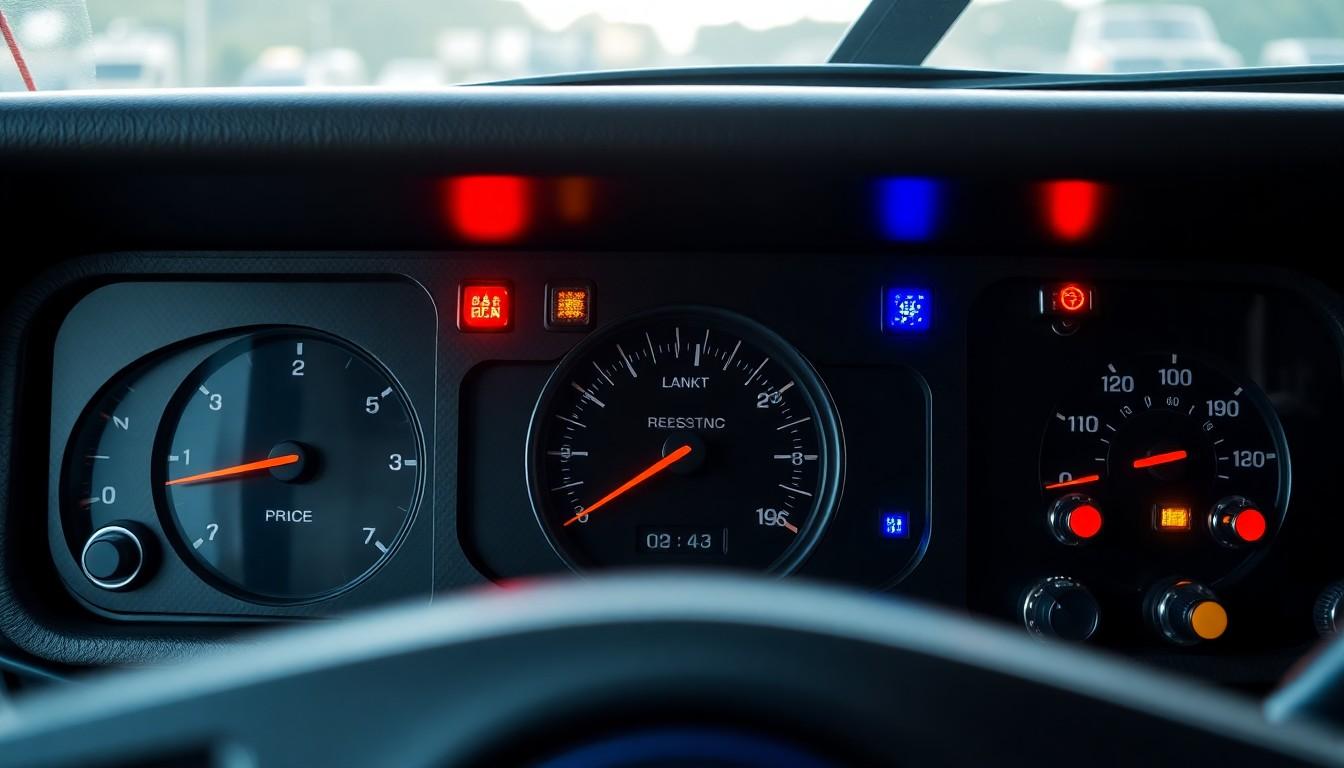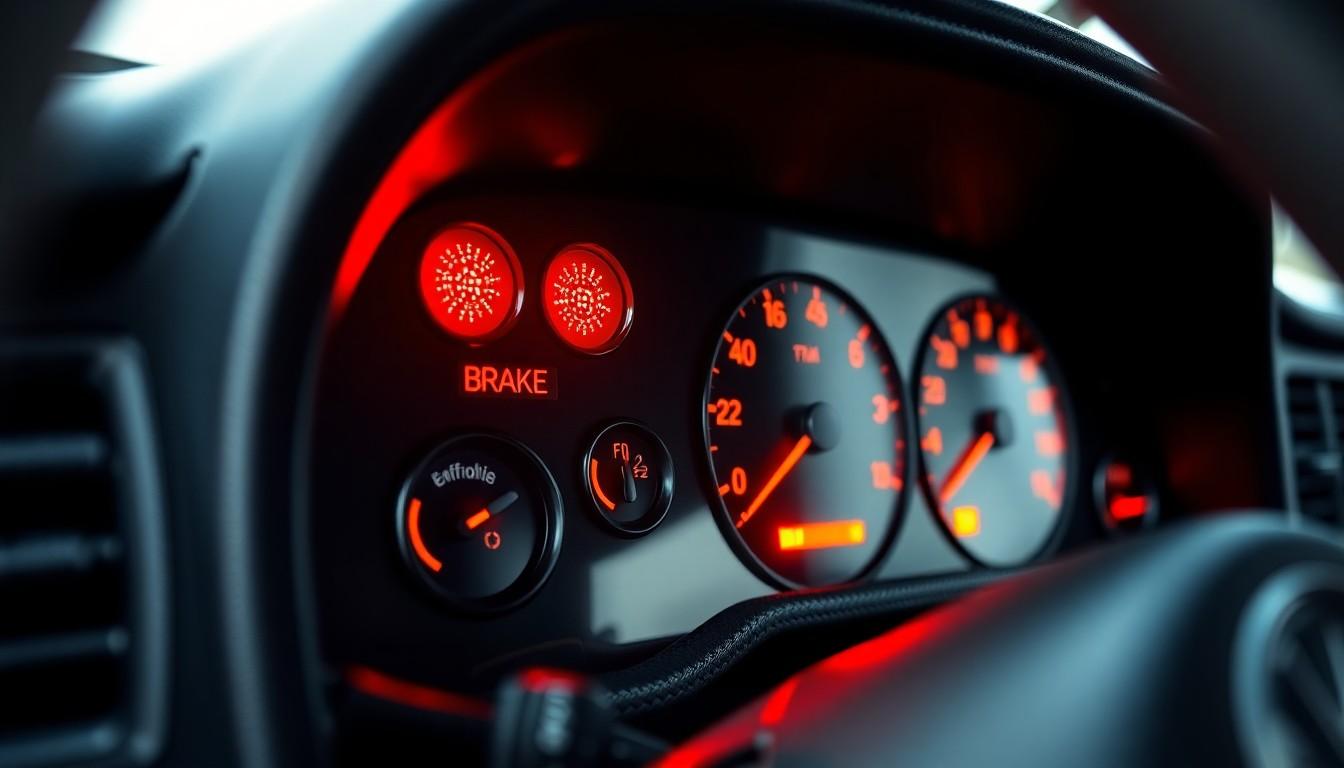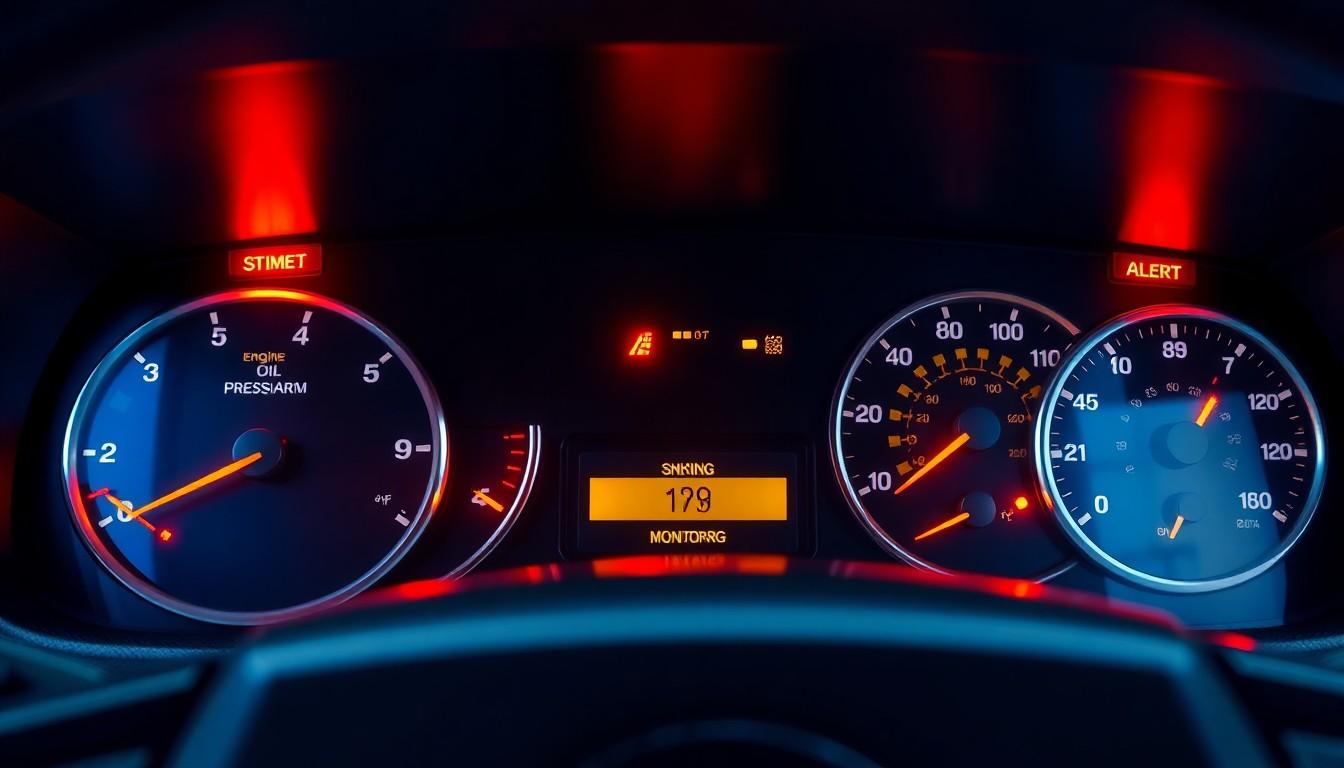When those warning lights illuminate on your Kenworth dashboard, it’s essential to understand what they’re telling you. We’ve created this comprehensive guide to help you decode these critical signals that could prevent costly breakdowns or dangerous situations on the road.
We’ll walk you through the most common Kenworth dash warning lights and their meanings, from critical engine warnings to minor maintenance reminders. Whether you’re a veteran trucker or new to Kenworth vehicles, knowing these indicators can save you time, money, and potentially hazardous situations while maintaining your truck’s performance and longevity.
Understanding Kenworth Dash Warning Lights
Kenworth dash warning lights operate as a vital communication system between your truck and you. These indicator lights alert drivers to potential issues ranging from minor maintenance needs to critical system failures that require immediate attention. Each symbol on your dashboard corresponds to a exact vehicle function or component, designed to provide at-a-peek information about your truck’s operational status.
Modern Kenworth trucks feature an array of warning lights, each with distinct colors that indicate severity levels. Red lights typically signal critical problems requiring immediate action, such as engine overheating or low oil pressure. Yellow or amber lights indicate caution or pending maintenance issues that should be addressed soon but may not require immediate stopping. Green or blue lights generally confirm that systems are operating normally or that certain features are activated.
Dashboard indicators in Kenworth vehicles follow industry standards while incorporating manufacturer-exact designs. Several common warning lights include the check engine light, oil pressure indicator, battery charge alert, brake system warning, and transmission temperature gauge. Understanding these symbols empowers drivers to make informed decisions about when to continue driving and when to seek professional assistance.
The dashboard display in newer Kenworth models often includes digital readouts that provide additional diagnostic information beyond simple warning lights. These displays show exact error codes, maintenance intervals, and detailed performance metrics that help pinpoint exact issues. Drivers who familiarize themselves with both the traditional warning lights and digital information systems gain comprehensive insight into their vehicle’s condition at all times.
Common Kenworth Warning Light Colors and Their Significance

Kenworth trucks use a color-coded warning light system to communicate various vehicle conditions to drivers. These dashboard indicators follow a universal color scheme that helps operators quickly assess the severity of issues and respond appropriately.
Red Warning Lights: Critical Issues
Red warning lights on a Kenworth dashboard signal serious problems requiring immediate attention. These critical indicators warn of conditions that could cause severe engine damage or compromise safety if ignored. The engine oil pressure light illuminates when there’s a important drop in oil pressure, potentially leading to catastrophic engine failure if driving continues. Similarly, a red brake warning light indicates a major malfunction in the braking system that requires immediate inspection. Battery charging system warnings signal that your alternator isn’t properly charging the battery, which can leave you stranded. Another crucial red indicator is the engine coolant temperature warning light, alerting you to dangerous overheating that demands pulling over and shutting down the engine to prevent permanent damage.
Yellow/Amber Warning Lights: Caution Required
Yellow or amber lights on your Kenworth dashboard represent cautionary alerts that need attention soon but aren’t immediately critical. These indicators highlight issues requiring monitoring or scheduled maintenance before they develop into serious problems. A common yellow warning is the low tire pressure indicator, which signals that at least one tire has fallen below the recommended inflation level, affecting fuel efficiency and handling. The DEF (Diesel Exhaust Fluid) light illuminates when fluid levels are running low, potentially impacting your emissions control system and compliance. Another important amber indicator is the DPF (Diesel Particulate Filter) light, which appears when excessive soot has accumulated in the filter, reducing engine efficiency and requiring a regeneration cycle or service.
Green and Blue Indicator Lights: Normal Operation
Green and blue lights on Kenworth dashboards typically indicate normal system operation or serve as simple reminders rather than warnings. These indicators provide status information without suggesting any mechanical problems. The seatbelt reminder light gently prompts drivers to buckle up for safety compliance during operation. Door ajar indicators remind operators when a door isn’t fully secured before driving. Unlike their red and yellow counterparts, these lights enhance the driving experience through helpful notifications rather than signaling vehicle malfunctions. Monitoring these standard indicators helps maintain proper operating procedures and ensures all systems are functioning as designed.
Engine and Powertrain Warning Lights Explained

Kenworth trucks feature a comprehensive system of warning lights that monitor the health of your engine and powertrain components. These indicators provide critical information about potential issues that could affect performance, efficiency, and safety while on the road.
Engine Check Light
The Engine Check Light (also known as Malfunction Indicator Lamp or MIL) resembles a motor and illuminates when the Engine Control Module detects a problem. This warning can indicate various issues ranging from a misfiring engine to a faulty sensor or even something as simple as a loose gas cap. Continuing to drive with this light on risks further damage to your engine components. The red Engine Oil Pressure Light signals a dangerous drop in oil pressure that requires immediate attention to prevent catastrophic engine failure. Another critical indicator is the Engine Coolant Temperature Light, which warns of overheating conditions that can cause severe engine damage if not addressed by stopping the truck and allowing it to cool down.
Transmission Warning Indicators
Transmission warning indicators in Kenworth trucks typically manifest through the check engine light or other system-exact alerts on the dashboard. While not always having dedicated warning lights, transmission issues are often integrated into the broader engine management system. Any unusual dashboard messages related to the transmission demand prompt attention to prevent costly repairs. Consulting your operator’s manual provides exact guidance for your particular Kenworth model when transmission-related warnings appear. Professional mechanical diagnosis is recommended whenever these indicators light up, as transmission problems can quickly escalate if neglected.
Exhaust System and DEF Warning Lights
The Diesel Exhaust Fluid (DEF) light activates when fluid levels drop too low or when contamination is detected in the system. Addressing this warning promptly by adding the correct type of DEF or replacing contaminated fluid maintains proper emissions control and prevents performance degradation. The Diesel Particulate Filter (DPF) light indicates excessive soot accumulation or regeneration failure in the exhaust filtration system. This warning requires immediate attention through manual regeneration or servicing to prevent reduced engine power and potential system damage. Both these exhaust system warnings are critical for maintaining environmental compliance and ensuring optimal engine performance in your Kenworth truck.
Brake System and Safety Warning Indicators

Brake system warning lights on a Kenworth dashboard provide critical information about potential safety issues that require driver attention. These indicators help prevent brake failure and accidents by alerting drivers to system malfunctions before they become dangerous.
Air Brake System Lights
The Air Pressure Warning Light is a critical safety indicator that illuminates when air pressure in the brake system falls below safe operating levels. This red warning demands immediate attention as inadequate air pressure compromises the truck’s ability to stop effectively. Drivers noticing this light should safely pull over and allow the air pressure to build back up to the recommended level before continuing their journey. Commercial truck air brake systems typically require between 90-120 psi for safe operation, with the warning light activating when pressure drops below 60 psi.
The Brake Warning Light (typically red) signals major malfunctions in the entire brake system, including low brake fluid levels, issues with air pressure, or electrical circuit faults. Continuing to drive with this light on risks complete brake failure and serious safety hazards. Some Kenworth models feature an exclamation mark (!) symbol alongside the brake warning, emphasizing the severity of the issue and the need for prompt professional inspection.
ABS and Stability Control Warnings
The ABS Warning Light indicates problems with the Anti-lock Braking System, which prevents wheel lock-up during emergency stopping situations. When illuminated, this amber indicator suggests issues with ABS sensors, control modules, or related components. Though the standard braking system remains functional when this light appears, the advanced safety features that prevent skidding are compromised. Regular inspection of ABS components helps prevent unexpected activation of this warning light during critical driving moments.
The Stability Control Warning Light signals faults in the electronic stability system designed to prevent rollovers and maintain vehicle control in challenging conditions. This technology works by selectively applying brakes and adjusting engine power to keep the truck stable during cornering or on slippery surfaces. When this indicator illuminates, the truck’s ability to automatically correct for loss of control is compromised, requiring more cautious driving, particularly in adverse weather or when handling sharp turns. Addressing stability control warnings promptly maintains crucial safety systems that protect both driver and cargo.
Fuel and Temperature Warning Lights

Kenworth trucks use exact warning lights to monitor fuel levels and engine temperature, alerting drivers to potential issues before they cause serious damage. These indicators are crucial for maintaining optimal vehicle performance and preventing costly repairs.
Fuel System Indicators
The fuel system in Kenworth trucks has multiple warning lights that help drivers monitor fuel status and emissions systems. The Low Fuel Warning Light illuminates when fuel levels drop below a critical threshold, signaling the need to refill soon. This straightforward indicator helps prevent unexpected breakdowns due to empty tanks while on the road.
Equally important is the Diesel Exhaust Fluid (DEF) Light, which activates when DEF levels are running low. DEF plays a critical role in the truck’s emissions control system, breaking down harmful nitrogen oxides into harmless nitrogen and water. Ignoring this warning can lead to reduced engine performance and potential emissions system issues, as modern Kenworth trucks are designed to enter a reduced power mode when DEF reaches critically low levels.
Engine Temperature Warning Lights
The Engine Coolant Temperature Warning Light represents one of the most critical indicators on a Kenworth dashboard. This red warning light signals that the engine is overheating, a condition that requires immediate attention to prevent severe engine damage. Overheating can result from various issues including low coolant levels, cooling system malfunctions, or radiator problems.
When this warning light illuminates, drivers should safely pull over as soon as possible and allow the engine to cool down before investigating. Common causes include coolant leaks, faulty water pumps, or blocked radiators. Operating a truck with an overheated engine can lead to warped cylinder heads, damaged head gaskets, and even complete engine failure—resulting in repairs that can cost thousands of dollars.
The temperature warning system works along with the Oil Pressure Warning Light, as overheating can affect oil viscosity and pressure. Together, these indicators form a comprehensive monitoring system for the thermal and lubrication aspects of your Kenworth’s engine, helping to maintain optimal performance and longevity.
How to Respond to Kenworth Warning Lights

Kenworth warning lights demand exact responses based on their color and symbol to prevent vehicle damage and ensure safety. Understanding the appropriate actions for each warning can save thousands in repair costs and prevent dangerous roadside breakdowns.
Immediate Action Items
Red warning lights on your Kenworth dashboard require immediate attention to avoid catastrophic damage. Pull over safely when you see the engine oil pressure light and check your oil level before continuing to drive. The brake warning light signals major brake system malfunctions including issues with the handbrake and ABS, requiring immediate inspection before proceeding. For engine coolant temperature warnings, safely stop your truck, allow the engine to cool, and check coolant levels to prevent overheating damage. A blinking check engine light means you should turn off unnecessary accessories, decrease speed, or pull over safely until the problem is resolved.
For amber or yellow lights, prompt but less urgent action is typically needed. The tire pressure monitoring (TPMS) light indicates that one of your tires has dropped below acceptable pressure levels – check and inflate all tires to recommended levels to prevent accidents from defective tires. When the service vehicle soon light illuminates, it’s connected to your body control module and may indicate lamp malfunctions with headlights, taillights, or turn signals, or possibly electrical communication errors that need diagnosis.
When to Contact Professional Service
Contact a certified Kenworth service center immediately for persistent brake system warnings, engine overheating issues, or continuous blinking engine warning lights. These complex problems often indicate serious mechanical failures that require professional diagnostic equipment and expertise. For the service vehicle soon light, professional diagnosis is essential as this can indicate multiple electrical issues from simple lamp malfunctions to complex sensor problems that aren’t easily identified without specialized tools.
The check engine light requires professional attention if it doesn’t resolve after checking simple issues like a loose gas cap or if it continues to blink after reducing speed. Battery warning lights that persist after checking connections suggest charging system failures that need certified technician diagnosis. Keep detailed records of any warning lights you encounter and the troubleshooting steps taken – this documentation helps technicians diagnose intermittent issues and creates a maintenance history that’s valuable for both servicing your truck and maintaining its resale value.
Preventative Maintenance to Avoid Warning Light Issues

Preventative maintenance serves as the first line of defense against dashboard warning lights in Kenworth trucks. Regular maintenance practices not only extend your vehicle’s lifespan but also minimize costly repairs and unexpected downtime. Let’s explore essential maintenance routines that keep those warning lights from illuminating.
Regular System Checks
Regular monitoring of critical systems helps catch potential issues before they trigger warning lights. Checking engine oil levels at least weekly prevents the dreaded red oil pressure light from activating. Brake system inspections should be performed during pre-trip inspections to identify any developing problems with brake pads, lines, or fluid levels. Battery terminals require cleaning and tightening periodically to maintain proper connections and prevent charging system failures.
Coolant and Engine Temperature Maintenance
Engine temperature management plays a crucial role in preventing overheating warnings. Checking coolant levels before each long haul ensures your engine maintains optimal operating temperature. Inspecting the entire cooling system quarterly for leaks, worn hoses, or malfunctioning thermostats heads off temperature-related issues. Radiator fins should be cleaned regularly to maximize heat dissipation, especially during summer months when engines face higher thermal stress.
Emissions Control Monitoring
Emissions-related warning lights often appear due to neglected maintenance of the exhaust system. Monitoring DEF levels regularly prevents the DEF warning light from activating, which can lead to engine power reductions if ignored. DPF systems need attention through both driving habits and scheduled cleanings – maintaining highway speeds periodically helps the filter self-regenerate and reduces soot accumulation that triggers warning indicators. Following manufacturer recommendations for DPF maintenance intervals dramatically reduces emissions-related dashboard alerts.
General Maintenance Practices
Following Kenworth’s recommended maintenance schedule forms the foundation of warning light prevention. Scheduling professional inspections every 15,000-20,000 miles catches developing issues before they become serious enough to trigger dashboard warnings. Testing all dashboard warning lights during routine maintenance confirms the monitoring systems themselves are functioning correctly – malfunctioning indicator lights sometimes point to issues with the CECU module or dash dimmer switch rather than the systems they monitor.
Professional diagnostic scans complement visual inspections by identifying potential problems before they manifest as visible warning lights. These preventative approaches save important time and money compared to reactive repairs after warning lights appear, keeping your Kenworth truck reliable and road-ready.
Conclusion
Understanding your Kenworth dash warning lights isn’t just helpful—it’s essential for safety and efficiency on the road. We’ve explored how these indicators serve as your truck’s communication system alerting you to everything from minor maintenance needs to critical failures.
Remember that red means stop immediately yellow suggests caution and green or blue indicates normal operation. By familiarizing yourself with these signals and maintaining a consistent preventative maintenance schedule you’ll catch issues before they become expensive problems.
Today’s Kenworth trucks feature sophisticated diagnostic systems that provide detailed information about your vehicle’s health. Taking the time to learn these indicators will save you money extend your truck’s lifespan and keep you safer on the highways.
Drive smart focusing to what your Kenworth is telling you through its dashboard warning lights.
Frequently Asked Questions
What do red warning lights on a Kenworth dashboard indicate?
Red warning lights on a Kenworth dashboard indicate critical issues that require immediate attention. These serious problems may include engine oil pressure drops, overheating, brake system malfunctions, or other severe faults that could lead to vehicle damage or safety hazards. When you see a red warning light, you should safely pull over as soon as possible and address the issue before continuing your journey.
What’s the difference between yellow and red warning lights?
Yellow or amber warning lights serve as cautionary alerts, indicating issues that need attention but aren’t immediately critical. Red lights signal serious problems requiring immediate action. Yellow lights often point to maintenance needs or developing issues that should be addressed soon but don’t necessarily require pulling over immediately. Always consult your owner’s manual to understand the specific meanings of each light.
How do digital displays in newer Kenworth trucks help drivers?
Digital displays in newer Kenworth models provide detailed diagnostic information beyond simple warning lights. These systems show specific error codes, performance metrics, and maintenance reminders that help drivers better understand their truck’s condition. This enhanced information allows for more informed decision-making about when to seek professional assistance and can help technicians diagnose problems more efficiently.
What preventative maintenance can help avoid warning light issues?
Regular preventative maintenance includes weekly engine oil checks, brake system inspections, coolant level monitoring, and following Kenworth’s recommended maintenance schedule. Professional inspections every 15,000-20,000 miles help identify developing issues before they trigger warning lights. Properly maintaining the cooling system and emissions controls is particularly important for preventing overheating and emissions-related alerts.
When should I pull over if I see a warning light?
Always pull over immediately for red warning lights, which indicate critical issues that could damage your vehicle or create safety hazards. For yellow/amber lights, consult your manual—some require prompt attention while others can be addressed at your next scheduled stop. Green or blue indicators typically confirm normal operation and don’t require stopping. When in doubt, err on the side of caution.
Can I reset warning lights myself?
Some minor warning lights may reset after addressing the underlying issue. However, many modern Kenworth trucks require professional diagnostic equipment to properly reset warning systems, especially those related to emissions, engine management, or electronic control modules. Attempting to bypass or ignore persistent warning lights without fixing the actual problem can lead to serious damage and safety risks.
Are warning lights the same across all Kenworth truck models?
While Kenworth maintains consistency with many standard warning symbols, specific lights and their exact meanings can vary between different models and years. Newer trucks often feature more sophisticated warning systems with additional indicators and digital displays. Always refer to your specific model’s owner’s manual for the most accurate information about your truck’s warning light system.
How do emission control warning lights differ from engine warning lights?
Emission control warning lights specifically indicate issues with systems designed to reduce harmful exhaust emissions, such as the DEF (Diesel Exhaust Fluid) system or DPF (Diesel Particulate Filter). Engine warning lights cover broader mechanical issues like oil pressure, temperature, or general engine malfunction. Emission lights often relate to regulatory compliance, while engine lights typically signal mechanical problems affecting performance or safety.

